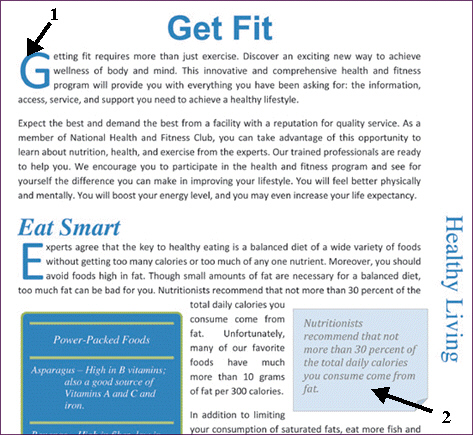Exam 18: Creating Pivottables and Pivotcharts
Exam 1: Microsoft Access Basics46 Questions
Exam 2: Creating a Database46 Questions
Exam 3: Creating Queries46 Questions
Exam 4: Creating and Modifying Forms46 Questions
Exam 5: Creating and Modifying Reports46 Questions
Exam 6: Integrating Access46 Questions
Exam 7: Enhancing Table Design46 Questions
Exam 8: Using Advanced Queries46 Questions
Exam 9: Using Advanced Form Features46 Questions
Exam 10: Adding Advanced Features to Reports46 Questions
Exam 11: Creating and Running Macros46 Questions
Exam 12: Automating Database Processes46 Questions
Exam 13: Programming in Access46 Questions
Exam 14: Creating Database Security and Documentation46 Questions
Exam 15: Microsoft Excel Basics46 Questions
Exam 16: Using Advanced Chart Features46 Questions
Exam 17: Improving Data Accuracy46 Questions
Exam 18: Creating Pivottables and Pivotcharts46 Questions
Exam 19: Using Powerful Excel Functions46 Questions
Exam 20: Creating and Using Macros46 Questions
Exam 21: Working With Auditing and Analysis Tools46 Questions
Exam 22: Protecting, Tracking, and Sharing Workbooks46 Questions
Exam 23: Importing and Exporting Data46 Questions
Exam 24: Changing the Appearance of a Worksheet46 Questions
Exam 25: Organizing the Worksheet46 Questions
Exam 26: Entering Worksheet Formulas46 Questions
Exam 27: Using Functions46 Questions
Exam 28: Enhancing a Worksheet46 Questions
Exam 29: Working With Multiple Worksheets and Workbooks46 Questions
Exam 30: Working With Charts46 Questions
Exam 31: Applying Advanced Formats to Worksheets46 Questions
Exam 32: Microsoft Office 2010 and the Internet46 Questions
Exam 33: Microsoft Powerpoint Basics46 Questions
Exam 34: Sharing and Delivering Presentations46 Questions
Exam 35: Creating Enhancing Powerpoint Presentations46 Questions
Exam 36: Working With Visual Elements46 Questions
Exam 37: Expanding on Powerpoint Basics46 Questions
Exam 38: Editing and Formatting Slide Content46 Questions
Exam 39: Working With Tables and Charts46 Questions
Exam 40: Working With Visual and Sound Objects46 Questions
Exam 41: Customizing Slides46 Questions
Exam 42: Importing and Exporting Information46 Questions
Exam 43: Microsoft Word Basics46 Questions
Exam 44: Working With Templates and Styles46 Questions
Exam 45: Customizing Tables and Creating Charts46 Questions
Exam 46: Creating Mail Merge Documents46 Questions
Exam 47: Sharing Documents46 Questions
Exam 48: Working With Long Documents46 Questions
Exam 49: Creating Indexes and Tables of Contents, Figures, and Authorities46 Questions
Exam 50: Working With Long Documents46 Questions
Exam 51: Creating Indexes and Tables of Contents, Figures, and Authorities46 Questions
Exam 52: Basic Editing46 Questions
Exam 53: Helpful Word Features46 Questions
Exam 54: Formatting Text46 Questions
Exam 55: Formatting Paragraphs and Documents46 Questions
Exam 56: Working With Graphics46 Questions
Exam 57: Working With Documents46 Questions
Exam 58: Increasing Efficiency Using Word46 Questions
Exam 59: Enhancing Documents46 Questions
Select questions type
FIGURE EX 12-1  Item 1 in Figure EX 12-1 above shows a ____.
Item 1 in Figure EX 12-1 above shows a ____.
Free
(Multiple Choice)
4.9/5  (31)
(31)
Correct Answer:
B
If you do not want the slicer to print, you can right-click it and choose ____ from the shortcut menu.
Free
(Multiple Choice)
4.7/5  (28)
(28)
Correct Answer:
A
What is the relationship, in terms of the data, between a PivotTable and a PivotChart created from the PivotTable?
Free
(Short Answer)
4.9/5  (41)
(41)
Correct Answer:
The PivotTable and PivotChart are linked. If a change is made to the PivotTable, the associated PivotChart changes as well. If changes are made to the PivotChart, the PivotTable reflects this change too.
After you create the PivotTable, you can continue to rearrange the data.
(True/False)
4.9/5  (33)
(33)
Case EX 12-2 Joey has created a PivotTable that contains the financial data for his restaurant. If Joey wants to change the location of rows and columns in the PivotTable, he needs to use the ____ dialog box.
(Multiple Choice)
4.8/5  (31)
(31)
If a change is made to the PivotTable, the associated PivotChart changes as well.
(True/False)
4.9/5  (38)
(38)
Clicking selections on the ____ lets you filter your data in a PivotTable.
(Multiple Choice)
4.8/5  (27)
(27)
Each field (column of data) in a PivotTable can have its own PivotChart to filter data for the column.
(True/False)
5.0/5  (36)
(36)
The slicer includes ____ that you click to filter data in a PivotTable.
(Multiple Choice)
4.9/5  (29)
(29)
The Refresh button is located in the Data group on the ____ tab.
(Multiple Choice)
4.9/5  (28)
(28)
In a PivotTable, you can quickly change the format and calculation by redisplaying the ____________________ list and selecting another option.
(Short Answer)
4.9/5  (41)
(41)
When an item is highlighted in the ____, only the data for that item is displayed.
(Multiple Choice)
4.7/5  (32)
(32)
When there is more than one level in a PivotTable, the level of detail below the main row heading is called the ____________________.
(Short Answer)
4.9/5  (34)
(34)
The data that you choose to create a PivotTable needs to have ____.
(Multiple Choice)
4.8/5  (38)
(38)
If the data used to create a PivotTable is changed, click the ____ button to update the PivotTable to reflect this change.
(Multiple Choice)
4.8/5  (33)
(33)
After you sort or filter the data, a graphic, like a ScreenTip, appears when you place your mouse pointer over the Column Labels and Row Labels down arrows.
(True/False)
4.8/5  (33)
(33)
A ____ lets you rearrange worksheet data so you can analyze it in a variety of ways.
(Multiple Choice)
4.8/5  (34)
(34)
Showing 1 - 20 of 46
Filters
- Essay(0)
- Multiple Choice(0)
- Short Answer(0)
- True False(0)
- Matching(0)